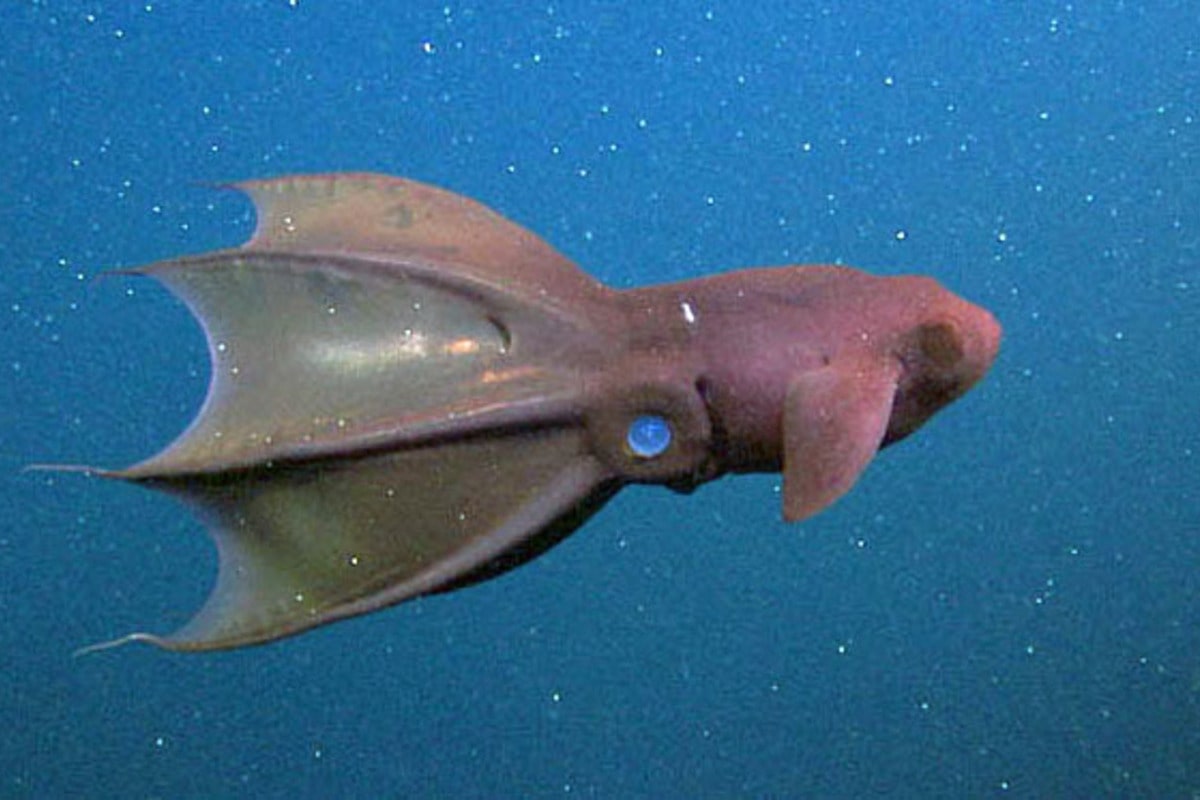The vampire squid is a mysterious deep-sea creature that continues to intrigue scientists and marine enthusiasts alike. With its eerie appearance, unusual behavior, and ancient evolutionary roots, it stands out among ocean dwellers. Despite its frightening name, the vampire squid is not a predator but a uniquely adapted survivor of the deep ocean’s harsh conditions. You might not know that it belongs to a separate group that combines features of both squids and octopuses. Below are some fascinating and informative facts about vampire squids that reveal the secrets of their remarkable existence.
- The scientific name of the vampire squid is Vampyroteuthis infernalis, which translates from Latin as “vampire squid from hell.” It earned this name due to its dark coloration, reddish hues, and the webbing between its arms that resembles a cloak. Its reflective eyes enhance its ghostly look in the darkness of the deep sea.
- The vampire squid is neither a true squid nor a vampire. It belongs to a distinct order called Vampyromorphida and is the only living representative of this ancient lineage. It is considered a living evolutionary relic that has changed very little over millions of years.
- Unlike most cephalopods, vampire squids do not actively hunt live prey. They feed on marine snow, a slow-falling mixture of dead plankton, fecal matter, and other organic debris from the upper layers of the ocean. This low-energy diet helps them survive in nutrient-poor environments.
- Vampire squids inhabit depths ranging from 600 to 1200 meters, where complete darkness and low oxygen levels prevail. Their physiology is well-suited to such extremes, with a slow metabolism and special proteins that efficiently bind oxygen. These adaptations allow them to remain active where few other creatures can survive.
- The average adult vampire squid grows to about 30 centimeters in length, though some individuals may reach up to 40 centimeters. Its soft, gelatinous body helps withstand the intense pressure of the deep sea. This structure also aids in slow and energy-efficient swimming.
- Vampire squids have the largest eyes relative to body size of any known animal. Their eyes can measure up to 2.5 centimeters in diameter, which is enormous for such a small animal. This feature allows them to detect even the faintest light in total darkness.
- They possess the ability to produce light through bioluminescence, using special organs called photophores located at the tips of their arms. These light-emitting structures help confuse predators, aid in camouflage, and possibly serve for communication. In some cases, they release a glowing mucus instead of ink to disorient potential attackers.
- The webbing between their arms allows them to curl into a spiny, ball-like shape when threatened, making them appear larger and more intimidating. This defense mechanism is an effective deterrent against predators. It is a perfect example of deep-sea survival through illusion and bluff.
- Despite their name, vampire squids do not drink blood or attack other animals. They have no venomous teeth or piercing feeding apparatus like parasitic creatures. They are harmless and rely solely on detritus for sustenance.
- Vampire squids grow slowly and reproduce infrequently, with a life strategy centered on extreme energy conservation. Females can store spermatophores for months and lay small batches of eggs over extended periods. This reproductive method increases the chances of survival in challenging environments.
- Compared to other cephalopods, vampire squids show little aggression. They move slowly and deliberately, minimizing energy use. Their calm behavior is a direct adaptation to deep-sea scarcity and isolation.
- For a long time, scientists thought vampire squids were rare, but deep-sea submersibles have shown that they can be abundant in certain regions. Their low activity level and subtle presence make them difficult to detect. This discovery highlights how much remains unknown about deep-sea life.
- Instead of bones, vampire squids have a thin internal cartilaginous structure that acts as a skeleton. This flexible support system helps them resist pressure and remain agile. However, their lack of hard protection makes them vulnerable, so they rely on camouflage and retreat.
- The coloration of vampire squids can range from deep burgundy to pale violet, helping them blend into their dark surroundings. Their hue can change slightly depending on light angles and depth. This natural camouflage is a valuable defense against visual predators.
- Scientists believe that vampire squids have been around since the Mesozoic era. Fossil records show that their morphology has remained largely unchanged for tens of millions of years. This makes them true living fossils of the deep sea.
- In popular culture and folklore, vampire squids have inspired myths and legends. They are sometimes imagined as demonic sea spirits inhabiting the darkest parts of the ocean. While they are peaceful creatures, their bizarre appearance certainly fuels the imagination.
These interesting facts about vampire squids provide a glimpse into the mysterious world of deep-sea life and its extreme adaptations. Despite their fearsome name, they are gentle, efficient survivors perfectly suited to their hostile environment. Their anatomy, behavior, and evolutionary history reflect the astonishing diversity of life on Earth. In the future, we may uncover even more astonishing details about these fascinating marine creatures.





